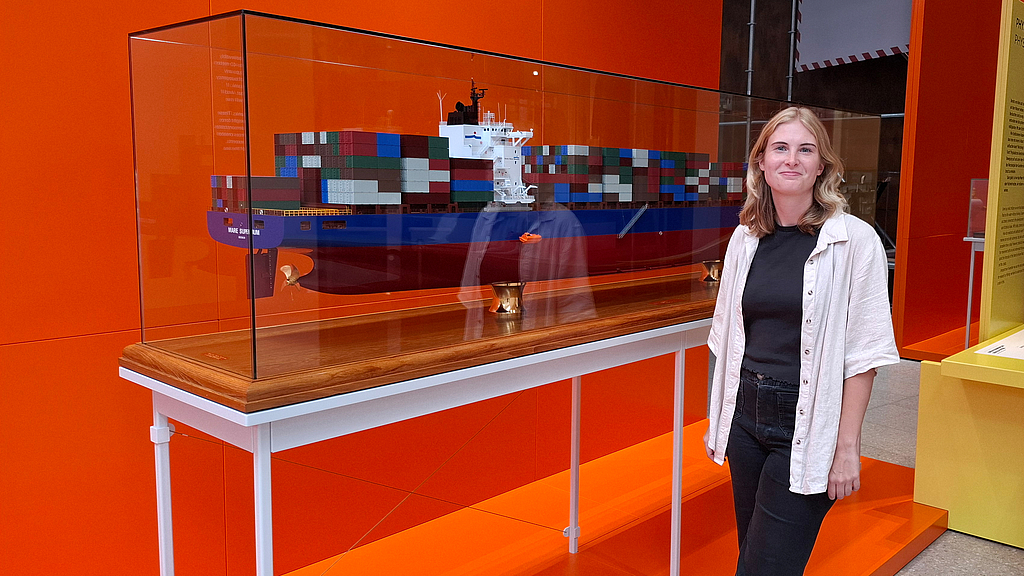Renée Hoogland: Oil production in the North Sea
Which research institute/university are you from, and how long will you be staying at the German Maritime Museum?
Renée Hoogland: I am a PhD researcher at the University of Southampton (United Kingdom), and I am visiting the German Maritime Museum as an International Fellow between August and November.
Could you please explain your research background?
My research background is in literary studies. I did my bachelor's and master's studies in Groningen and Amsterdam, in the Netherlands. Three years ago, I started my PhD project at the University of Southampton and Southampton Marine and Maritime Institute. Here I am part of an interdisciplinary research project that addresses how we could and should engage with the world’s oceans and seas. My PhD project explores the cultural imagination (literature, art, and politics) of Doggerland, a landscape that sank in the North Sea thousands of years ago. I am researching how people think and talk about North Sea environmental history—natural events that happened long ago—and how this might shape the way they speculate about the future of the North Sea: especially in terms of energy production and resource extraction.
Why did you decide to do a research stay at the German Maritime Museum, and what will you be researching
At the German Maritime Museum, I will be researching the topic of North Sea oil production. After the North Sea countries discovered the presence of “black gold” in the 1970s and 1980s, there was an industrial boom in the offshore extraction of oil and gas. This period pushed the North Sea into the age of oil: a time when petroleum and human life became fundamentally entangled. In my research, I will be asking: how has oil production changed our historical-cultural perceptions about the relationship between humans and the North Sea? How does petroleum influence and shape the cultural imagination of the North Sea? To answer these questions, I will be looking at some oil rig models in the museum’s depot. I am very grateful that I can use the museum’s archive and facilities for three months. This allows me to dive deeper into the research topic, learn from fellow researchers, and further develop my research on environmental history and North Sea energy production.
Which exhibit is particularly exciting for you?
I was fascinated by the exhibition part of “The Sea and Us” that addresses cargo shipping. This connects to my research interest in the ways that shipping and industry are changing not only the sea itself, but also how humans experience the sea. The exhibition shows the pollution after-effects of cargo shipping, which is sometimes very obvious—for example when the beach is filled with plastic objects after a shipping incident. But the exhibition also shows more “hidden” aspects of cargo shipping, such as the (involuntary) transportation of marine animals in the ship’s ballast water—inviting us to think about the scientific and political implications of calling those species “foreign” or “invasive”.

Credit: DSM / Annica Müllenberg

